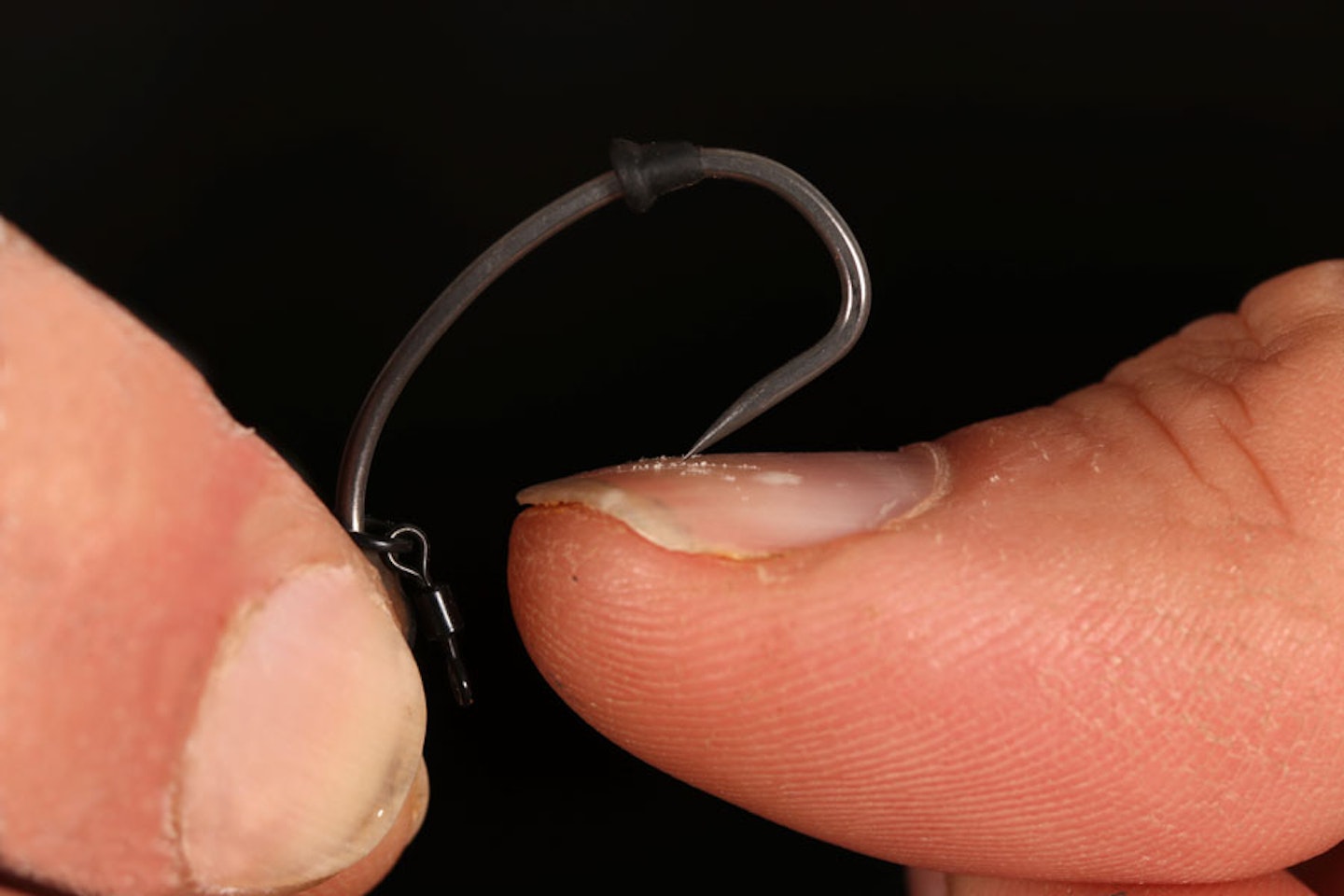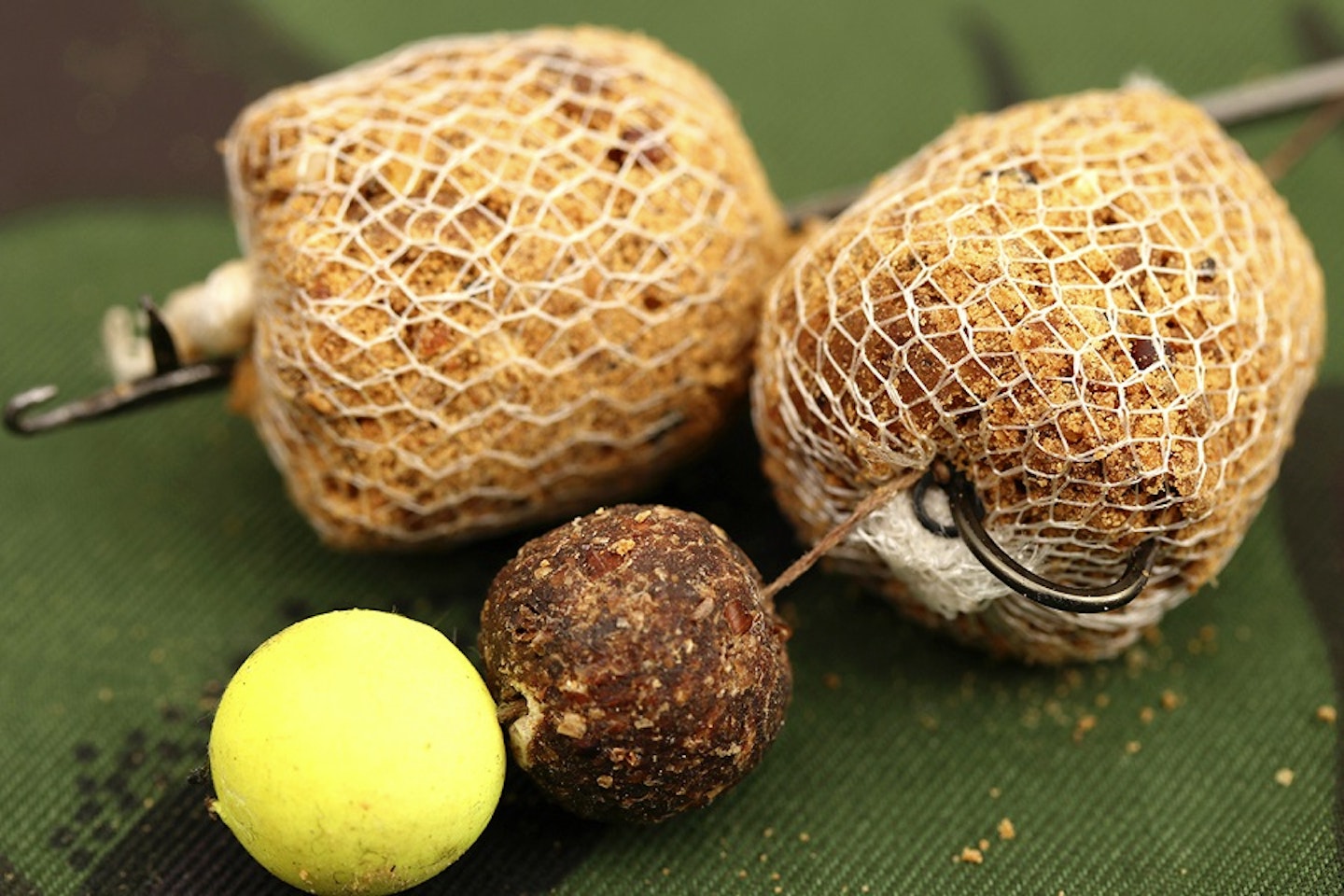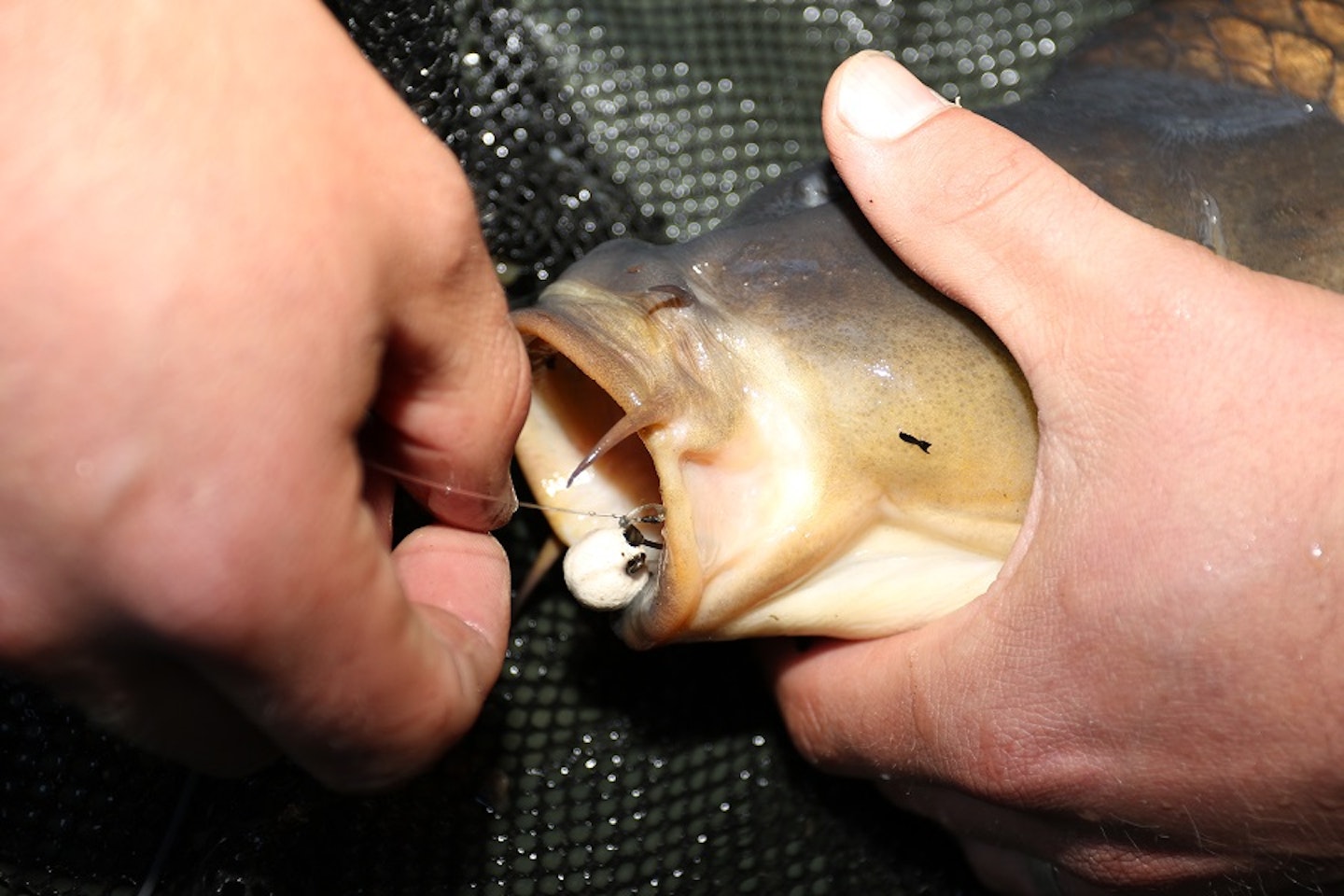Are you struggling to work out why you’re losing fish to hookpulls? Gardner’s Lewis Read takes a detailed look at the main ways to avoid carp shedding the hook...
There are few more galling feelings than losing a fish halfway through the fight or, worse still, at the net.
The initial shock soon gives way to anger and, once the offending rod has been retrieved from the bush it was thrown into, dejection takes over.
Some of these losses might be down to tackle breakages or unseen submerged obstacles but, in most cases, it’s a poor hookhold that’s to blame.

WHAT CAUSES HOOKPULLS?
So, what are the main contributing causes of poor hookholds? Maintaining a ‘good’ presentation that is untangled is obviously a vital consideration, and simple things, like making sure the hair comes off the back of the shank untwisted, and that the hair, bait size and hooklink length are all in proportion with one another, are central to gaining secure hookholds.
Basic stuff, for sure, but these are the things that make rigs work or fail.
Some anglers seem to suffer far more hookpulls than others, and the reasons are normally extremely varied…and easily fixable! If you’re one of those unlucky anglers, then hopefully I’ll be able to suggest a solution that will help to some degree.
THE BASICS OF RIG MECHANICS
Standard rig principles are well-known, but some aspects are so important that, if contravened, the consequences can be dismal bankside results.
The obvious starting point is the hook itself. Most of the time we rely on the hook to prick and penetrate quickly, with minimal resistance, but if yours is anything other than sticky sharp you will be completely undermining the potential of the terminal arrangement – it’s that simple.

This could lead to ‘unmissable runs’ being missed, or fish falling off a few seconds into the fight due to the hook not penetrating as it should.
Some anglers will say they bin the hook after every fish, but I take a more realistic view, and just test the point.
If it’s not ‘sticky sharp’, I’ll either resharpen it (if I’m tight for time) or tie up a new rig.
There’s all sorts of ways of testing the hookpoint, but my preferred method is to put the point vertically on to your fingernail.
If it slides at all, then it’s blunt and you’ll need to change the hook or give it some TLC.
There’s little use in honing your points to perfection if the pattern of hook you’re using isn’t suited for the rig or hookbait being used. If it has a shape that doesn’t create a positive angle of draw (so that the pressure on the hook pulls the point in alignment with the force), then it doesn’t matter how sharp the point is – it’s not going to be pulling in the right direction.
For example, if you’re fishing with a wide gape pattern with a straight point on a soft hooklink, it may pull across the skin rather than penetrate because the point is dragging at quite a severe angle – rather than being pulled at an angle that offers minimal resistance to going in.
Conversely, the same pattern mounted on a stiff material that holds the hook at a sufficient angle to minimise this issue is far more likely to go in properly.
HOOKLINK LENGTH MATTERS
The length of hooklink you use can also have a big bearing on hookholds, not least in the way it compensates for the presence of any detritus, weed or soft sediment which could impede penetration.
If your hookbait and rig get buried in weed, then the rig simply may not work as intended.
‘Going longer’ ensures that the rig isn’t dragged down into the muck when the lead plummets into the lakebed, and just adding a few inches to your hooklink can be all it takes to improve hookholds over such lakebeds.
An easy way of slowing the descent of the rig to make sure it settles on top of lakebed rubbish is to incorporate a PVA bag of crumb into your set-up, ideally by threading it down the hooklink.

Of course, there are other benefits to this, not least that you end up with a pile of highly-attractive boilie crumb near your hookbait that can help to disguise the rig.
An added bonus is that these little parcels of goodness add extra weight to the end of your rig which can also help to stop the hooklink from tangling on the cast too. Safe to say, if range permits then I’ll always have an ‘ickle bag’ on any bottom bait rig presentation that uses a soft hair.
CARP WITH ‘SOFT MOUTHS’?
Another cause of poor hookholds on some waters is attributed to the fish having ‘soft mouths’, often as a consequence of them being predominantly ‘silt feeders’.
While I’m sure that this is a valid description that indicates that the fish feed in such a manner (or that the strain has a mouth structure that makes attaining a secure hookhold more difficult) there is normally an answer.

This is where getting ‘riggy’ will potentially help, by improving the ‘reaction speed’ of the hook and making it turn further back in the carp’s mouth to convert more pick-ups into fish in the net.
Adding line aligners, kickers or extensions to the hookshank with Supa-Shrink tubing or specifically designed components like the Hook Aligner radically alters the hook’s behaviour in several key ways.
The first of these is the way in which the ‘fulcrum’ point (the lever point along the hook that creates the twist – normally the inside of the eye with regards to a knotless knot) is pushed significantly further away from the hook, which means that the hook reacts when more of it has entered the fish’s mouth.
You might think that means the rig is slower to react because it has to go in further, but that’s not the case at all.
Because the hook is in further, its inherent weight is exaggerated and the hookpoint reacts at the same speed, critically placing the point in contact with flesh further inside the mouth.
That means you can potentially get better hookholds and lose fewer carp. ‘Angled kickers’ exaggerate and enhance the fulcrum effect and help to ensure the hookhold is better as the kicker tends to help maintain a sympathetic angle of draw that helps the hook drag in straight to the point (or in alignment with a beaked point) so you get a solid hookhold quicker.
RIGHT BAIT, RIGHT PLACE...
A lot of the time when anglers suffer a run of blanks, it’s is not the hook arrangement or bad presentation that’s at fault’, it’s the bait being used and the way it’s being applied.
This probably has the most significant effect on the way our rigs ultimately work, as this can define how the carp feed.
A group of fish feeding in a confident, tails-up, enthusiastic manner require far less mystic trickery to catch than a single fish feeding cautiously on a spot over a sprinkling of bait.

Finding some fish in a safe place where you can covertly watch their reaction to your bait is time well-spent and the information gleaned will help you decide whether you need to consider presentation as an issue.
Another consideration is the buoyancy of hookbaits used with pop-up rigs. If you consider the mechanics of set-ups like the chod, hinged stiff and Ronnie rigs, which all rely on the rig being able to twist freely to offer optimum mechanical efficiency, it’s not hard to see why a poor pop-up that allows the rig to lean over can potentially undermine the rig’s performance.
Think of it like turning a bicycle wheel if the axle is horribly out of alignment – it won’t turn freely – and it’s a similar concept when looking at the rotation of pop-up rigs with stiff hook sections. If the pop-up doesn’t do what it should, then the rig will be compromised, and so will the hookhold.
MAKE SURE YOUR HAIR IS FUNCTIONING
Small bags of crumb threaded down the hooklink also help to stop rig tangles by trapping the hair. I can’t stress enough the importance of making sure that your hair can’t twist around the hook on the cast.
This is one of the biggest causes of poor hookholds, and, as such, I will always trap a conventional soft hair in position so that it can’t ‘wrap’.

You don’t even have to use a PVA bag of crumb. A bit of dissolving rig foam or a small piece of PVA tape trapping the hair in place will both do the job, with the second of these options barely adding any resistance to the cast either, which is an important consideration when you’re fishing at maximum range.
You can even use the tag end of a PVA mesh bag of freebies that you’ve nicked on to the hook!

PLAY THE CARP PROPERLY
If you’re getting hookpulls and you don’t think it’s your terminal rig arrangement that’s at fault, have you thought about how you play your fish and, most importantly, your technique when you pick up the rod?
Hooks like our amazingly sharp Covert Dark range have phenomenal points, and if you’re fishing with a freespool mechanism set relatively tightly so that the fish comes under pressure from the off, most of the time the hook is already set, so you definitely don’t need to strike!

All you have to do is lift the rod, tightening the clutch in a controlled manner while you do so, to be in full and direct contact with the fish.
All things considered then, it’s a combination of gaining a solid knowledge of how rigs work, and expanding your practical angling experience, that will ultimately mean you’ll land more of the fish that you hook.
Don’t ever accept losses as being just ‘one of those things’. Instead, use the experience to tell you that something needs adjusting and work it out from there – getting it right is a fantastic feeling!
